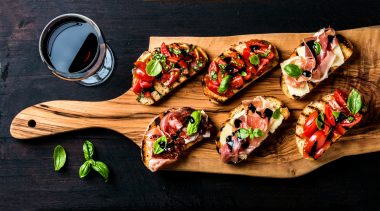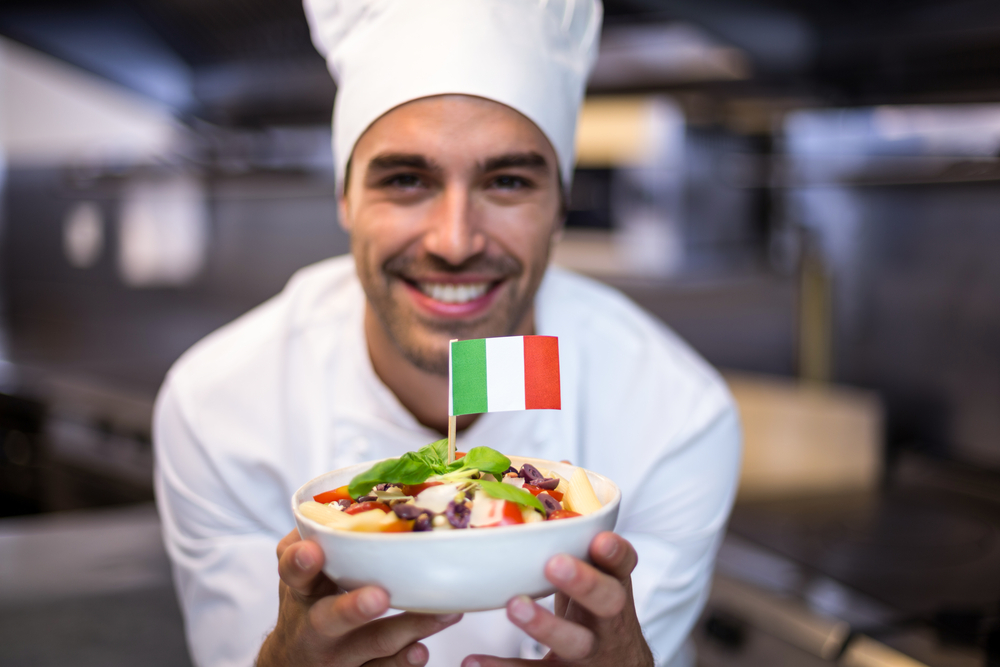Italian cuisine is one of the best in the world. In addition to pizza and pasta, however, it has far more highlights to offer. For example, numerous excellent wines, of which there are very different varieties depending on the region. A typical Italian menu consists of three courses. The first course is pizza or pasta, followed by meat or fish and finally the meal is rounded off by a sweet dessert. Each course can be accompanied by its own wine. At the end there is an espresso. But what are the ingredients that make Italian cuisine so distinctive?
Olive oil
Italy, and Tuscany in particular, is known for its virgin olive oil. The earliest evidence of olive cultivation in the world comes from the Livorno area on the Tuscan coast. In the past, oil was so important that the land was inherited not in meters, but in the number of olive trees.
The olives are harvested between October and November, when the olives have the perfect mix of ripe and almost ripe state to ensure the right acidity in the product. To be officially considered extra virgin olive oil, the acidity must be below 0.8%, with the risk of too high acidity if harvested late.
Once the olives are picked from the trees, they are taken to a mill. While some larger growers have their own on-site mill, most smaller growers have to go to a local oil press. Since the pressing must take place as soon as possible after the harvest, the mills keep appointments throughout the day and all night during the oil season.
The olives are placed on a grate that is churned up to remove dirt, grass and the like from the olives. They are then subjected to a first cold pressing. The product obtained in this way is “extra virgin olive oil”, which has a rather green colour and can be consumed raw. The remaining pulp can then be pressed again with heat to create “extra virgin olive oil” that is used for cooking. Another chemical extraction can be done to obtain only “olive oil”. However, most Italians say that this is best used to polish the furniture.
Extra virgin olive oil is a good fat that can even lower cholesterol and other heart problems. Freshly pressed extra virgin olive oil is rich in antioxidants, minerals and vitamins. When heated, many of these properties are lost. That’s why Italians drizzle this oil over soups, boiled vegetables, salads, meat or on toasted bread with a little salt (the original “bruschetta” recipe) instead of cooking the oil with the dish. Fresh bread and raw seasonal vegetables can also be dipped in the oil as a tasty and healthy appetizer.
Here you will find an extensive selection of olive oil and other Italian delicacies!
Italian coffee
It’s certainly no secret that coffee is an integral part of Italian culture. Coffee probably came to Italy around 1500 via the Venetian ports through trade with countries in the Middle East and Africa. From Venice, coffee then spread to the rest of Europe (cf.).
After Pope Clement VIII declared in 1600 that coffee consumption was a very Christian activity, it immediately became popular throughout the peninsula. However, it took about 45 years before the first coffee house was opened in Rome in 1645. Exactly 300 years later, the first espresso machine was developed in Milan. Since then, both espresso and cappuccino have become popular coffee drinks around the world.
Italians drink about 14 billion espressos annually, which accounts for about 60% of the coffee sold in the country. Less than 15% of the coffee drunk is drunk as a cappuccino and only a little less as “caffè corretto” (an espresso with a shot of grappa or other liqueur). One in ten coffees is espresso with a dash of milk (“macchiato”).
Cappuccino and other lattes (such as caffè latte milk with coffee) are usually only served as breakfast coffee, as Italians consider the heavy and nutrient-rich milk to be too much for an after-meal drink. Therefore, Italians drink an espresso or other lighter coffee throughout the day. At home, Italians usually prepare their coffee in a moka pot on the stove.
Bruschetta

Probably the most famous appetizer in the Italian restaurant is bruschetta, a baked bread that is traditionally spread with olive oil, salt, pepper and a little basil. In our country, the variant with tomatoes, garlic, basil and olive oil is the most common. In the country itself, however, there are many more variations of bruschetta, for example with cheese, cured meats or olive tapenade.
Tortellini
A popular Italian pasta dish is the tortellini, a ring-shaped pasta packet that is often filled with traditional ingredients from the region (cheese, meat, or a mixture of both). Similar to ravioli, this Italian classic comes from Emilia. The very best tortellini in the country can be found in Bologna.
Ravioli
An absolute highlight of Italian cuisine is ravioli, a dish that consists of stuffed pasta packets. No one really knows where the ravioli originated, because both Venice and Tuscany are vying for the title. What is known, however, is that this delicious dish can be found all over the country, especially wherever there is authentic home cooking.
Orecchiette pasta
When it comes to Italian pasta, it’s worth noting that each region of the country has its own pasta dishes and sometimes even its unique pasta shapes. A particularly unique form of pasta is the orecchiette, so called because it resembles “little ears”. This pasta shape comes from the Puglia region in southern Italy. Puglia’s cuisine is typically very vegetable-heavy, and so the dishes prepared with this pasta are no exception. Among the most popular dishes are orecchiette in tomato sauce and orecchiette with rutabaga tips.
Risotto
One of the best places to enjoy risotto is Milan, where the local dish on the menu is called risotto alla Milanese (a simple risotto dish made from saffron-spiced rice). Elsewhere in the country, this creamy broth dish is popular in bars, taverns, and restaurants. The risotto is available in countless delicious variations, with vegetables, fish, meat, tomato sauce, Parmesan and much more.




